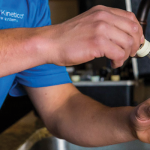
Setting goals and objectives is a critical part of any successful organization, but it’s not the only piece to the puzzle. Effective teams also need effective goal-setting processes and metrics, or “OKRs.” Businesses commonly use Skillfire OKRs to measure success and progress. They’re simple yet powerful: an objective is a goal that’s measurable, achievable, relevant, and time-bound. A metric is an actual number or statistic used to track progress towards the objective.
What are OKRs?
Businesses must set and track goals if they are going to succeed. It is where OKRs come in – they are a system of goal-setting and tracking that businesses of all sizes can use. OKRs are a system used by companies to set and track goals.

The benefits of using OKRs:
Since the early 2000s, OKRs have been gaining popularity as a tool for setting and measuring organizational progress and success. There are many benefits to using OKRs:
First, OKRs can help to clarify and simplify the process of setting goals. They provide a framework for defining what you want to achieve and how you will know when you’ve done it.
Second, OKRs can help to align individual goals with a team or company goals, creating a sense of shared purpose and helping everyone work together towards common objectives.
Third, because they are measurable, OKRs can help track progress and identify areas of improvement. It makes it easy to identify successes and failures and make necessary adjustments.
How to set up OKRs:
Setting and achieving goals is a key part of any organization, yet it can be challenging to create effective plans. The first step is to come up with some objectives for your organization. For example, a purpose for a software company might be to increase monthly revenue by 25%.
Once you have your objectives in place, you need to develop key results that will help you measure progress towards those objectives. These could be increasing monthly active users by 10% or reducing customer support tickets by 20%. Once you have your objectives and key results in place, you must decide on a time frame for each.
The four attributes of high-performing teams with OKRs:
For a team to be high performing, it must have four specific qualities: clarity of purpose, focus on results, regular feedback, and effective communication. These four attributes create an environment where everyone works together towards a common goal, and they can receive timely feedback that allows them to improve constantly.
Conclusion:
A recent study by the Skill fire Business Review found that only 49% of employees believe their company is effective at setting objectives and key results (OKRs). It could be because so many companies struggle to get their OKRs right. In order to establish effective OKRs, it’s important to understand the purpose of OKRs and the key components of an effective OKR system. Objectives should be specific, measurable, achievable, relevant, and time-bound. And key results should be quantifiable so you can track progress and measure success.










